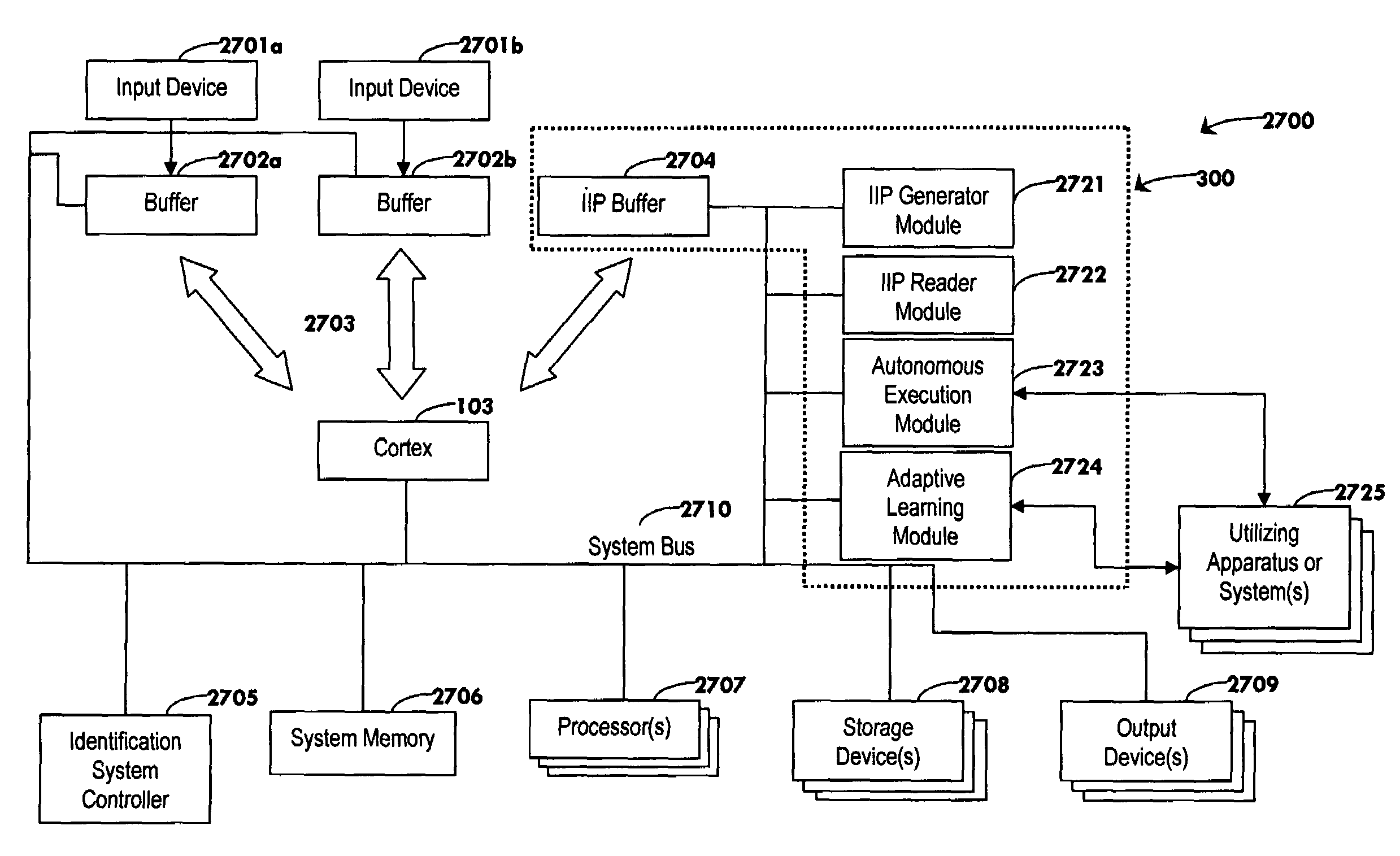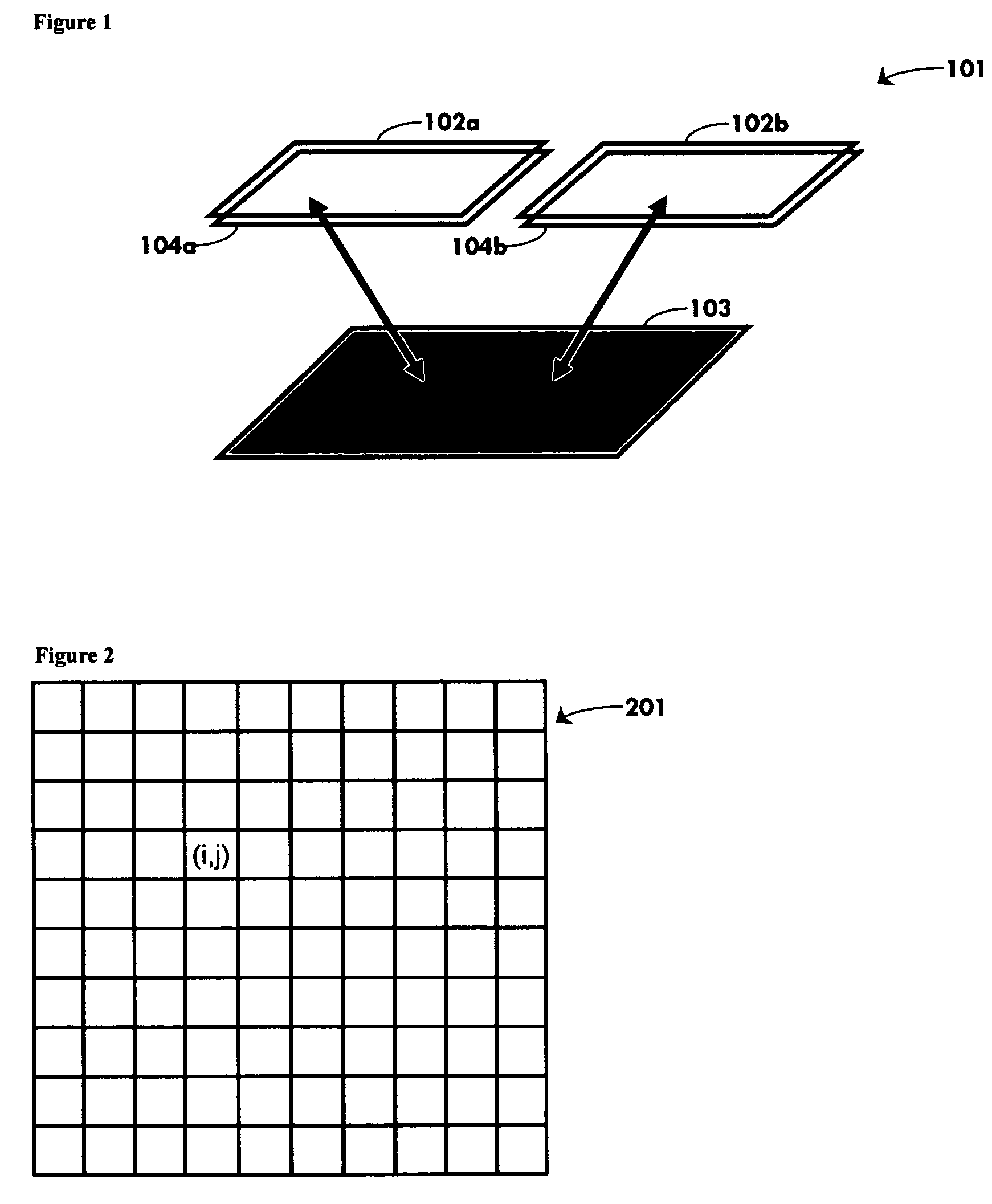Finally, as a
system dependent upon physical optical components such as photoelectric sensors, lenses, and shutters, it is constrained by defects, degradation, and inherent resolution and measurement limitations in those devices.
In Scarr, any defects or misalignments in the
optical arrays would lead to malformed holograms and thus poorly recalled patterns.
Finally, Scarr notes that
data page storage capacity is limited by the relatively
low density of detectors that can be arranged together on the input plane given
current sensor technology.
First, each successful retrieval operation will involve the discharging of one and possibly many transmission lines, each of which must be recharged prior to the next retrieval operation.
Thus, there are both timing and electrical
power consumption limitations inherent in this class of associative memories.
Second, this type of
system does not admit a clear possibility of improvement of learning or generalization of stored patterns via incorporation of new data.
There are disadvantages to using neural networks for many real-world
pattern recognition tasks.
First, in order to resolve patterns accurately, in many cases the size of the network needed becomes prohibitive for real-world applications.
Second, in many cases, very large sets of input data (tens of thousands of inputs) are required in order to
train the network.
Even with redundant learning patterns, training of neural networks can be challenging.
For example, in Suzuoka, U.S. Pat. No. 5,524,177, it is disclosed that “the memorization of the patterns becomes difficult very rapidly for the higher
noise level” in the energy-minimization-based neural
network model disclosed therein.
Third, the commonly used gradient-descent approach for calculating weights results in
information loss and decreased accuracy as numerical truncation errors propagate throughout the
system.
Fourth, even versions that address error propagation, such as Boltzmann machines, are limited in their commercial applicability by the long execution times that can be required to reach optimal solutions to classification problems.
Also, because that system relies upon breaking an original single input pattern into multiple sub-patterns, computation time and storage requirements both increase exponentially as the size of the original input pattern increases.
A second
disadvantage stems from the system's method for encoding input data.
While bounding input signals effectively, this preprocessing step has the negative consequence of making some input signals hard to distinguish from one another after the transformation.
Such expert systems are inherently limited in their ability to
handle noise or uncertainty in making identification decisions.
As such, it can be difficult to determine whether enough rules have been written and indeed whether those are the correct rules to apply.
As such, it is difficult to define membership functions that will work optimally for a broad range of complex input patterns.
Furthermore, essentially the same disadvantages of the
rule sets of expert systems apply also to those of
fuzzy logic systems (e.g., potentially incomplete or incorrect
rule sets, large rule sets with long execution times and heavy maintenance burdens, etc.)
While
pattern recognition systems that utilize specialized circuits, such as those noted above, do generally operate at high speeds, they are significantly limited in breadth of applicability due to a number of disadvantages.
Typically, these systems feature relatively simple analysis capabilities and thus can have difficulty recognizing patterns that are complex, have significant
noise levels, or show
data corruption.
In addition, such systems do not generally possess any ability to improve their identification performance over time through
adaptive learning or generalization.
In particular, methods based on
feature extraction generally suffer from the problem that the features chosen by the system designer might not be optimal for all types of input patterns and that noise and
data corruption can cause incorrect identifications if certain key attributes or features are missing or otherwise obstructed.
The computational requirements of solving these optimization problems can be too large for real-world applications, as the matrices involved can quickly exceed the memory and computing capacity of many computers.
In many cases, the number of examples required for successful training can be large enough to make real-world applications difficult.
Also, in some cases, a significant number of input feature vectors are unseparable, that is, they cannot easily be separated into distinct classes using hyperplanes.
Finally, the reliance of SVMs upon explicitly chosen sets of features can be problematic.
Systems that match extracted features like
minutiae are susceptible to errors caused when genuine features are missed or when spurious features are mistakenly identified.
In Ort, et al., supra, it states that such problems can arise from “over inking,
low contrast, scratches, pencil marks” and from “acquired artifacts in the
fingerprint itself, such as cuts, scrapes, abrasions, and
scars.” Similarly, Pankanti, et al. note that sources of variability in multiple impressions of the same finger arise from “non-uniform contact (with the sensor), irreproducible contact, inconsistent contact, and imaging artifacts” and hence that “the probability of false correspondences increases significantly” (See Pankanti, S. Prabhakar, and A. K. Jain, “On the Individuality of Fingerprints,”IEEE Transactions on
Pattern Analysis and
Machine Intelligence, Vol. 24, No. 8, August 2002 (in Press)).
These types of problems are exacerbated when only a partial print is available, as in the forensic analysis of latent prints.
While the optical components do offer
rapid processing, they have the
disadvantage of limitations arising from alignment, wear, and resolution limits associated with those physical devices.
First, face recognition systems that employ neural networks encounter the same difficulties noted earlier for neural network-based associative memories.
Second, systems that rely upon extraction of specific
landmark features can produce erroneous results when the
landmark features (eyes,
nose, mouth, .
. . ) either are difficult to classify due to noise or other variations in the image or are missing entirely, as is the case where a person's eyes are obscured by sunglasses.
The
verification of handwritten signatures is another pattern recognition problem of considerable interest, especially to the banking and financial services industries.
The primary
disadvantage of the prior art methods compared with the present invention relates to the ability to allow for natural variations between the extracted features of previously registered signatures and those of ones to be verified.
A number of the prior art systems suffer from an unacceptably high number of false rejections of genuine signatures.
While some of these methods (for example, that of Parks disclosed in U.S. Pat. No. 5,109,426) make explicit attempts to reduce the occurrence of false negatives, those adjunct techniques are frequently ad hoc and require a fair amount of direct tuning by human experts.
 Login to View More
Login to View More  Login to View More
Login to View More 


